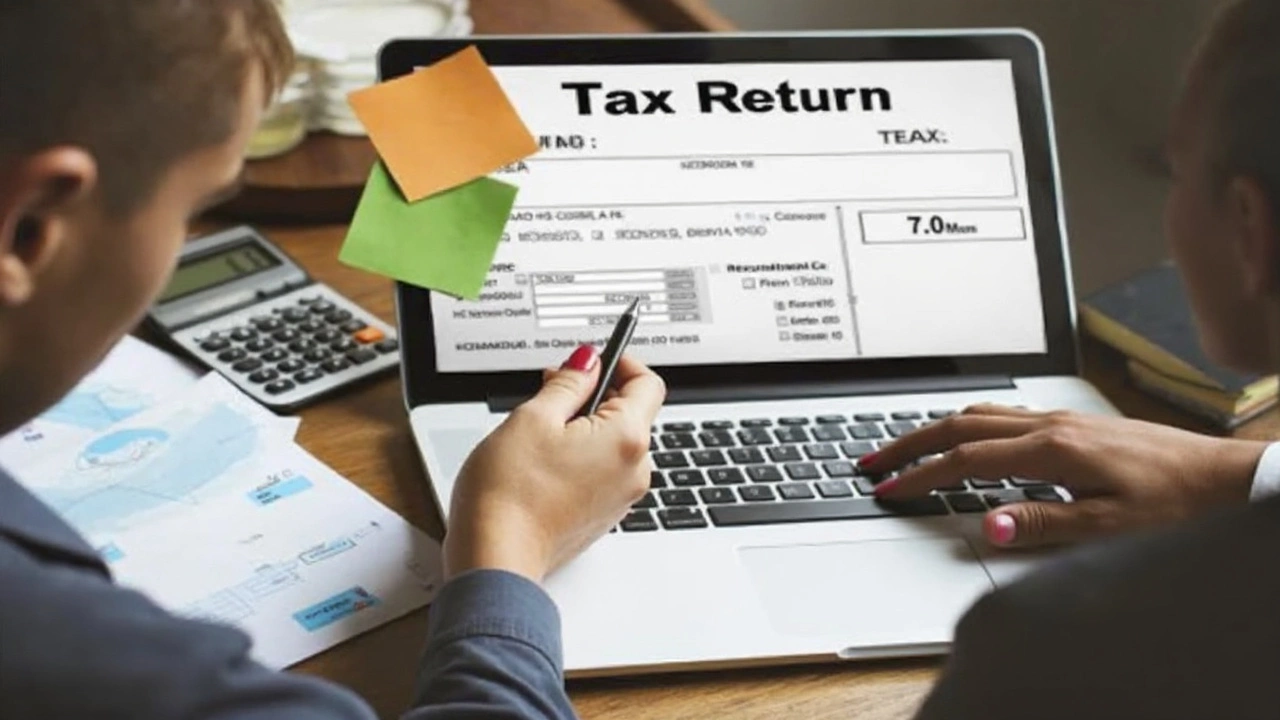Filing Income Tax Without Form 16: What You Need to Know and How to Do It Right
 Jun, 2 2025
Jun, 2 2025
How to File Income Tax Returns Without Form 16
Too many people panic if their employer delays or doesn’t issue Form 16. But here’s the thing: you can absolutely file your ITR without it. Yes, Form 16 is handy—it’s like a cheat sheet for your taxes—but it’s not the only way to get the job done. If you keep a cool head and know what papers to dig out, you’ll be just fine.
Start by rounding up your salary slips. These little slips reveal everything—your total pay, how much tax was chopped off, and any special allowances tucked in your salary. Next, log in to the income tax e-filing website and download your Form 26AS. It’s a digital tracker showing all the tax deducted from not just your salary but other payments, like FD interest, or even rent if you’re a landlord.
Now, add up each monthly salary (including allowances and bonuses from every employer if you switched jobs). Don’t forget other sources of money: did you pocket any bank interest, rent, capital gains, or side gig income? All of that has to go in, line by line. Your final tally is your total income for the year.
Here’s a step that trips people up: double-check your TDS with Form 26AS. Compare what your salary slips say was deducted to what actually shows up in 26AS. Missed out on any TDS credits? Time to talk to your (old or new) employers or the bank so nothing gets skipped. If you changed jobs halfway through the year, collect payslips from every employer—ITR rules don’t let you ignore any salary you earned, even for a few months.
- Salary slips for each job
- Form 26AS as the big picture of your tax deductions
- Investment proofs (Section 80C, 80D, etc.)
- Bank account statements showing interest earned
- Loan interest certificates if you're claiming deductions for home/education loans
If your tax situation is straightforward—salaried, total income under ₹50 lakh, a single house property, maybe a bit of bank interest—you qualify for the ITR-1 Sahaj form. But if you score from stocks or side businesses, or own property overseas, you’ll need a different, more detailed form.
Many forget that investment proofs matter. Save them for every deduction you plan to claim. Think: PPF, insurance premiums, tuition fees, home loan payments. They all add up when reducing your tax bill. And don’t brush off the bank statements; they help spot every rupee in savings or FD interest which sometimes gets missed.
The Crucial Role of Form 26AS
While Form 16 was made for employees to quickly check their numbers, Form 26AS is more like the government’s master ledger on you. It lists TDS reported by every employer you’ve had, every bank or organization who paid you interest, and records advance tax payments if you made any. If it’s not there, the tax department won’t know, and you could miss out on rightful credits.
If you left a job in the middle of the year and didn’t get Form 16, don’t stress. As long as you track each salary credit, subtract tax correctly, and pull numbers from Form 26AS, you can report what’s needed. You still have to report even the non-taxable salary, just in case your total income crosses the basic exemption limit.
So, Form 16 is nice—no question—but it’s not a deal-breaker. As long as you stay organized, match your salary slips with what’s in 26AS, and save every deduction proof, your tax return will be accurate and safe from future scrutiny.